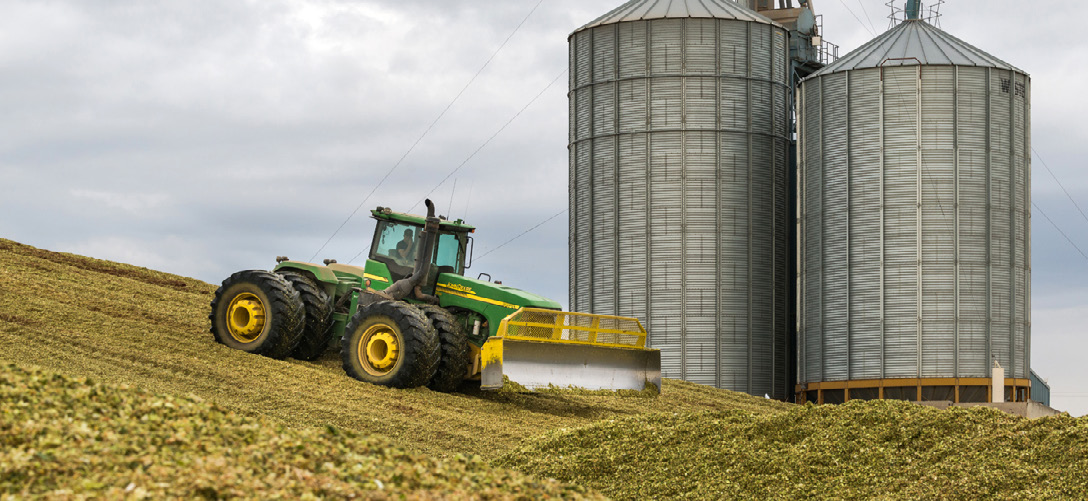Proper harvest management is critical for producing high quality corn silage. Below are a few quick tips to consider when harvesting your corn silage.
Tips #1: Check the whole plant moisture
- Ideal whole plant moisture for corn silage harvest is 62-68% moisture (38-32% dry matter) (for horizonal bunker storage)
- 62-68% moisture range can correlate with ½ to ¾ milk line progression, but doing a harvest sample is the best way to check whole plant moisture before cutting an entire field
- Different storage methods will require different ideal whole plant moistures for optimal ensiling conditions
- Approximate corn silage dry-down rate: 0.5%/day
- Environmental conditions and hybrid characteristics can influence the dry down rate
Tip #2: Get the right chop length
- Target a theoretical length of cut (TLC) (aka target chop length) of 1/2 to 3/4”
- Silage chopped at the TLC of 1/2 to 3/4” will pack more firmly and result in increased palatability
- Course particles will reduce packing efficiency and can cause silage to spoil due to poor fermentation
- Particles cut too fine can reduce palatability and can result in a less effective roughage source
Tip #3: Use a bacterial inoculant
- The ensiling process relies on bacteria to produce lactic acid to “pickle” the silage and prevent the silage from spoiling and minimize loss
- Lactic acid-producing bacteria occur naturally on the chopped silage. Other bacteria are also present which are competing for the resources the lactic acid-producing bacteria require to “pickle” the chopped silage
- These bacteria work in anaerobic conditions which is why getting the right chop length and good packing is critical
- Lactic acid-producing bacterial inoculants are alive and inactive until rehydrated with moisture from the chopped silage (one of numerous critical reasons for ideal harvest moistures) and can greatly improve ensiling process
- Depending on the operation, a lactic acid-producing bacteria inoculant may not be necessary but a hetero-fermenting bacteria (L. buchneri) can be used to increase improve bunk face management
Tip #4: Pack the pit properly
- The purpose of packing the pit is to remove excess oxygen than can inhibit the ensiling process
- Tractor weight and layer depth is critical for good packing
- Tractor weight: the fill rate (tons/hour) should not be greater than the weigh of the tractor (lbs) divided by 800
- Example: if the tractor weights 40,000 lbs, the fill rate should not exceed 50 tons/hour (40,000/ 800 = 50)
- Layer depth: fresh silage should be packed in 6” layers on the packed bunker to avoid the development of air pockets between layers
- Tractor weight: the fill rate (tons/hour) should not be greater than the weigh of the tractor (lbs) divided by 800
Tip #5: Cover the silage pit quickly
- Use oxygen barrier film and UV resistant plastic to cover the full bunker as quickly as possible
- Large bunkers can take 1-2 days to fill
- Covering and sealing the bunker reduces dry matter loss and spoilage risk
- Once covered, weigh down the plastic barrier – tires are commonly used




